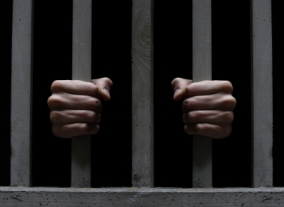Judging Life

By no means am I a constitutional scholar. I have yet to attend a law school class, and I have never given an oral argument before The Supreme Court. With that said, whatever I may lack in legal acumen, I make up for with “real world knowledge”. Yesterday the Supreme Court of the United States of America heard arguments on whether sentencing juveniles to life without parole violated the eighth amendment prohibition against “cruel and unusual punishment”. For the record, I am a staunch opponent of sentencing juveniles to life without parole. It’s not because I’m a bleeding-heart liberal that doesn’t believe in punishment. No, what I do believe in is science and empiricism. A National Institutes of Health study suggests that the region of the brain that inhibits risky behavior is not fully formed until age 25. This explains why teens are more likely than any other age group to be in an auto accident, but it also explains the lack of maturity and foresight among adolescents.
Where is the humanity in discontinuing the life of a young person who needs treatment? America’s obsession with mass incarceration has led to us claiming the title of number 1 imprisoning country. There is an estimated 2,570 juvenile serving life without parole in this country. These human beings will never see life outside of the penitentiary walls because of a crime they committed when they were children. Our punitive system hinges on the belief that these harsh sentences will serve as a deterrent for possible perpetrators. Obviously, this is not true. A federal crime study by Northeastern University criminologists shows that homicides involving Black male juveniles has risen 31%, and as perpetrators 43% between 2002 and 2007. Clearly, the issue of crime prevention needs to be addressed, but throwing children in jail for the rest of their lives doesn’t even begin to scratch the surface of solving the problem.
The Human Rights Watch estimates that more than 25% of juvenile offenders sentenced to life without parole are sentenced through the felony murder rule. The felony murder rule states that any death, which occurs during the commission or attempt to commit certain felonies, which include arson, rape or other sexual offenses, burglary, robbery or kidnapping, is first-degree murder and all participants in the felony can be held equally culpable, including those who did no harm, possessed no weapon, and did not intend to hurt anyone (prisonfoundation.org).
Both of the cases that the Supreme Court is hearing deal with two Black males from my home state- Florida. Joe Sullivan and Terrance Graham are both serving life sentences for non-homicidal crimes that they committed when they were teens. In fact, there are only 8 people in the United States serving life for crimes committed at age 13 and two of them are from Florida. I’d like to think that my taxpayer dollars are being used to rehabilitate people who truly have problems, and that they are not being used to just increase the prison population. I hope to one day live in a nation where each case will be judged individually without minimum sentences, but I’m probably looking through rosy-colored spectacles.
httpv://www.youtube.com/watch?v=qR7mno6p9iQ

